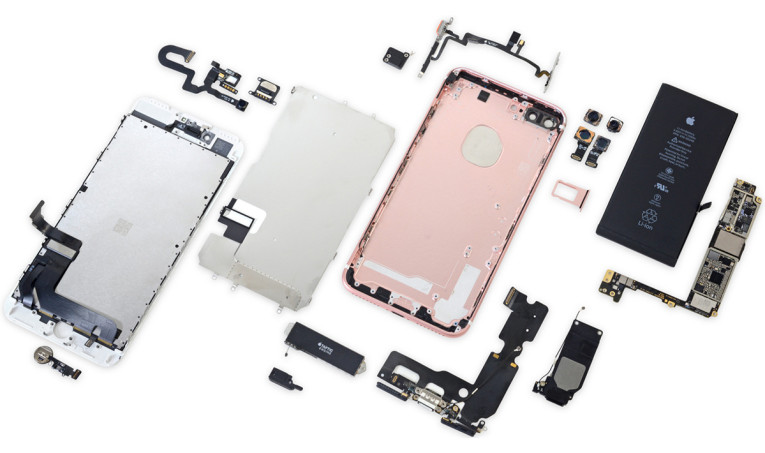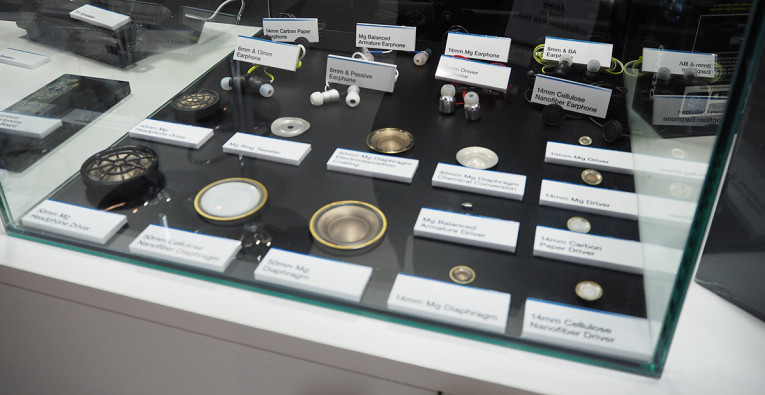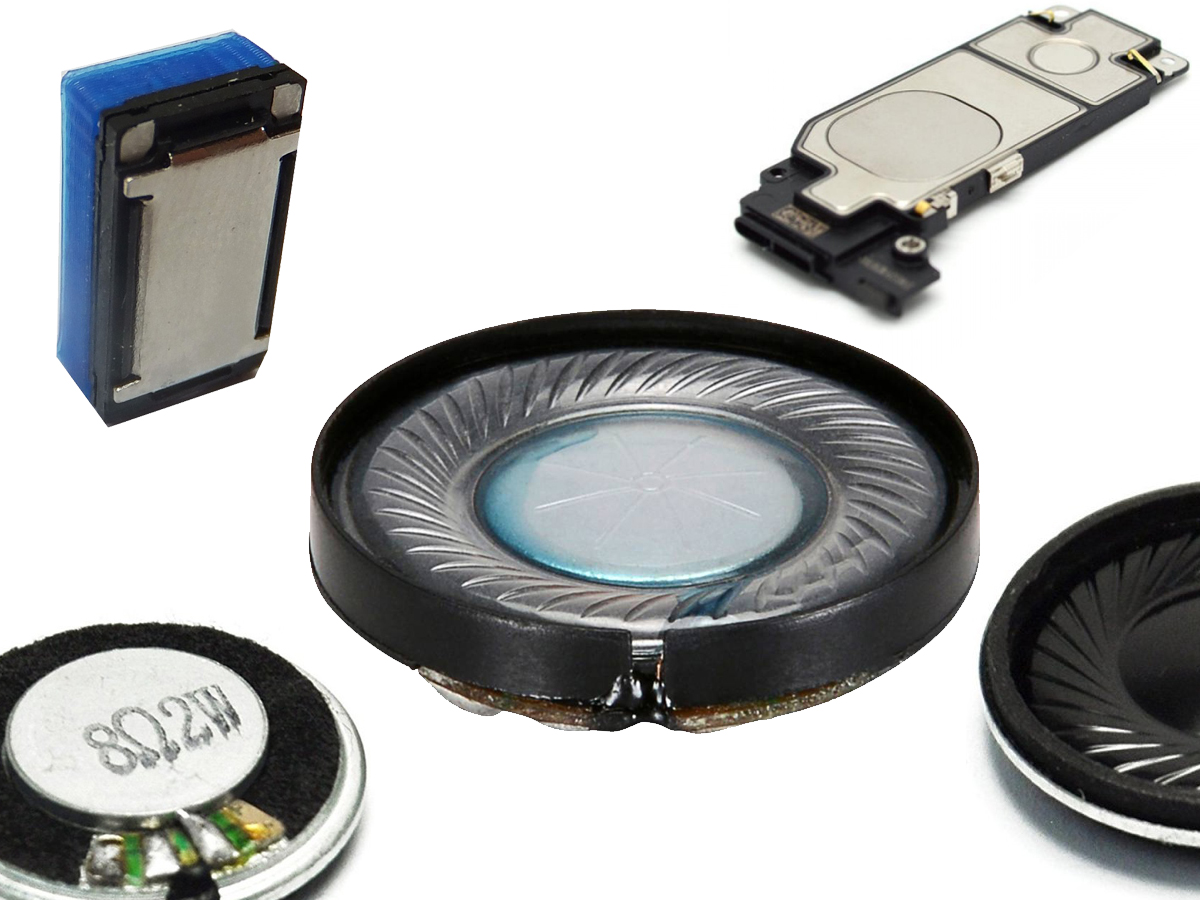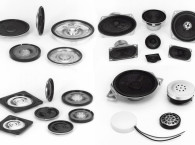I wrote this article while attending Mobile World Congress (MWC) in Barcelona, Spain, which is the main global event for smartphones — from the brands and OEM/ODM factories to the parts vendors, signal processing specialists, and design houses. As with most events, the most interesting news is found in the back rooms, the prototypes kept under the table at some display, or just the industry gossip. However, I will stick to solid information!
The case can be made that we all spend too much screen time with our smartphones. The range and diversity of features and functions and apps are mind boggling. But please don’t forget that at least one of the core functions of the phone is to talk to each other — ideally with intelligible and aesthetically pleasing quality. Now with the leading phones priced at $1,000 and more, shouldn’t we expect our smartphones to deliver better sound? The speakerphone function on most smartphones goes south at around 750 to 800 Hz, not so impressive when 300 to 3,000 Hz has been considered a marginal standard for telephony speech for about 100 years. It appears that while we expect reasonable sound from our soundbars, auto-sound systems, and headphones, when we pick up our beloved smartphones, we leave our expectations behind.
My wife recently spent $1,500 on an iPhone XS (she likes lots of memory!). This is about the cost of the Devialet Phantom, which had the best sounding audio in Apple stores last year (with real bass to 18 Hz). However, my wife’s XS microspeaker buzzes when pushed hard. Earlier generations of iPhones were in the $500 range so it would be a reasonable expectation of not so special audio. But at $1,500, the value proposition better offer some magic of the “shock and awe” variety. The “certified genius” and the store manager took a listen and rendered their judgment that all was well and the buzzy voice quality was reasonable for a smartphone. That works until TCL, Huawei, or OPPO Digital comes along with something closer to “hi-fi” quality and an extra octave of bass response without the rattles.

Yet, the future is bright and we are in for a step-change in sound quality from our smartphones. The smartphone platform is comprised of a system-on-chip or chipset (SoC), which includes audio codecs, DACs, and power amplifiers — and actually these are all quite decent. ESS Technology, Asahi Kasei Microdevices (AKM), Cirrus Logic (previously Wolfson), NXP Semiconductors, Qualcomm’s Qualcomm Aqstic, and even commodity vendor Realtek more than deliver the goods on the circuit performance. The compromises to “hi-fi” quality are in the protocols used by the carriers with which your phone is aligned. But now 5G is coming to both smartphones and the carriers’ cell towers.
In the US, the race is between AT&T, Verizon, and others for conversion upgrades to 5G. Add to these protocols of pristine quality (e.g., Fraunhofer’s EVS) and the move toward Super Wide-Band (SWB, up to 14 kHz response) and the sound from next generation of smartphones will be truly impressive.
Achieving wideband clean sound from the microelectromechanical systems (MEMS) mics is mostly a design effort of the mic port stack-up configuration and acoustic wind noise suppression techniques so as not to degrade the mic’s performance. The microspeakers in the smartphone are going to be the limiting consideration in speakerphone and stereo audio playback (gaming, movies, music, etc.).
The push to reduce the footprint and depth continues, but the microspeaker depth (Z-axis) has ratcheted down to 2.5 mm from 3 mm for smartphones — driven by the evaporation of the 3.5 mm headphone jack, which had been the bottleneck. The same product development teams that are demanding increased efficiency, power handling, cleaner sound, and extending the bass and top-end responses are also demanding the lowest possible price.

Several approaches are being used to overcome the limitations of size, acoustic output, and power handling in smartphone microspeakers. One path is to overdesign the speaker to absorb more power while maintaining practical mechanical excursion limits. Another more productive path is using DSP to maximally drive the speakers close to the edge of their safe operating area (SOA) without overdriving or damaging the speaker. The SOA can be crudely defined as the power limits, but it is more accurately defined as the thermal and mechanical limits. If you use advanced DSP to bring the microspeaker to its limits but not over them, can you omit overkill construction (e.g., larger diameter high-temperature voice coils and heatsinking)?
Sensitivity and the power to drive the speaker to desired levels are not just limited by the amplifier’s available power. The speaker must also have the capacity to handle this power. Two parameters must be respected. We must limit over excursion at the lower frequency range to prevent the moving parts from going beyond where they should. Higher excursion can result in bottoming where the voice coil hits the magnetic structure. We must also be careful not to exceed thermal limits, which are the limiting factor in the midrange and top-end. Clipped amplifier output and the ring tones can build up heat in the speaker’s voice coil faster than it can be dissipated, resulting in thermal failure.
The new generation of dynamic speaker protection integrated into “smart-amps” changes and provides predictable and controllable limits to the large-signal design requirements on speakers. Semiconductor vendors include the usual suspects of NXP, Qualcomm, Texas Instruments, Maxim-IC, Cirrus Logic, and others. If there is no additional acoustic output possible from the speaker, there is no sense in overdriving the speaker or suffering the additional battery drain. Sophisticated speaker integrated system engineering enables engineers to design application-specific drivers using considerations ranging from maximum speaker excursion, back volume, adjacent heat sources, and more. The protection circuit is “tuned” to the driver’s SOA envelope. Then, the driver is tweaked to accommodate the real-world limits of the speaker protection circuits. These solutions typically make use of voltage and current feedback to track the speaker impedance and control the power delivered to the speaker.
What if we could move more air (“pumping power” or volume velocity) without more piston area or increased excursion? A recent innovation (US Patent 9.294.841 B2) by speaker guru Joseph Sahyoun that will reach productization later this year compliantly suspends the microspeaker with a flexible membrane that encircles the speaker. The kinetic energy that is generated by the moving mass is tuned to be in phase to extend the bottom end almost an octave, essentially using the entire microspeaker concurrently as a passive radiator.

Magnetic structures are heading for a shake-up. The Z-axis stackup is a fight for space and with only 2.5 mm to 3 mm there is barely room for any diaphragm excursion. Help is on the way as higher mGO (e.g., N40 to even N52 neodymium) can be thinner than the garden variety neodymium, yet pack more punch. While not breaking news, the issue has been that the strong flux is lost in the magnetic return structure.
Now Carpenter Technology has introduced soft metals for the return structures enabling less flux loss with 40% thinner magnetic structures, (see Figure 1). I vote for more excursion, but I know the industrial design team will push for a slimmer microspeaker.
Microspeaker diaphragms range from paper, thermoplastic films (e.g., PET, PEN, PEI, PEEK, etc.) to laminated composites. Some developments include liquid injection-molded (LIM) surrounds, which enable more consistent bass roll-off point and slightly reduced enclosure volume. Other innovations are Clarosonic’s foamed thin-sliced PET and TeXtreme’s thin-ply spread tow thermoplastic carbon fiber.
AAC Technologies was privately demonstrating its enhanced SLS microspeaker technology in its demo room at the MWC show. Hi-fi low distortion, extended bass, and more sensitivity does not easily happen all at the same time, but what I heard was a noticeable improvement over the current crop currently used in smartphones. AAC is still in stealth mode about how the performance gains were achieved, but this is worth a closer look.

The Future—MEMS Microspeakers?
MEMS mics dominate the market, having progressively taken over from electret microphones (ECMs). MEMS are the technology of very small devices, usually consisting of a micro-transducer and an application-specific integrated circuit (ASIC). Expanding MEMS development from microphones to microspeaker is an epic challenge as while the diaphragm excursion on a mic is minuscule, a MEMS microspeaker is going to have to move some air. While the industry has been able to digitize and shrink all other device electronics, the last remaining barrier is the speaker, which remains bulky and very analog.
There are half-dozen MEMS microspeaker development initiatives, including USound’s piezo (see Photo 1), GraphAudio’s graphene electrostatic, and a couple of ultrasonic modulators (e.g., from Audio Pixels). Considering the maturity and value-proposition of microspeakers from the incumbents, it will be a steep challenge ahead for the MEMS microspeaker contenders. VC
This article was originally published in Voice Coil, April 2019.







